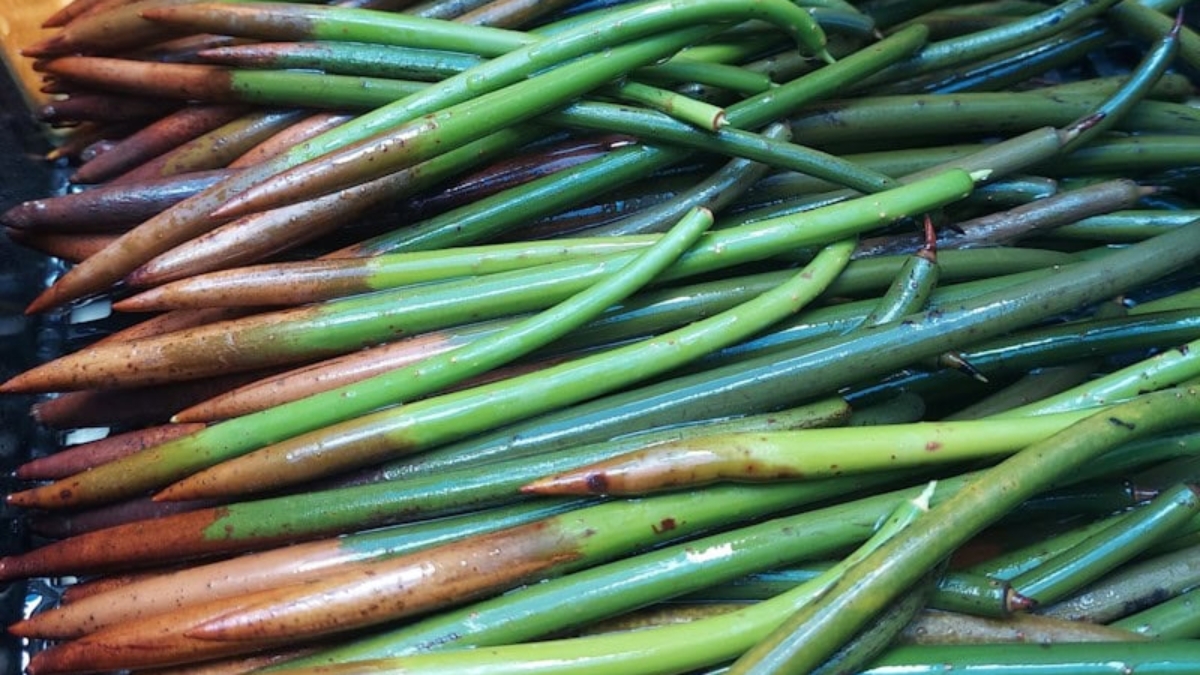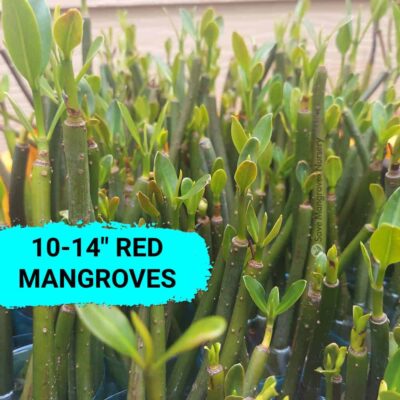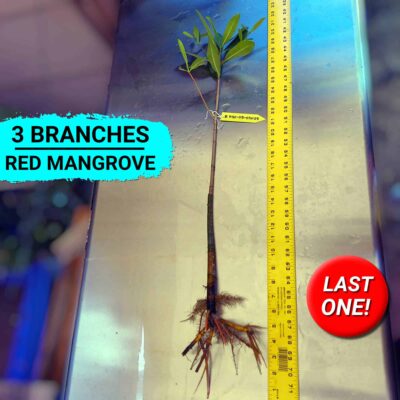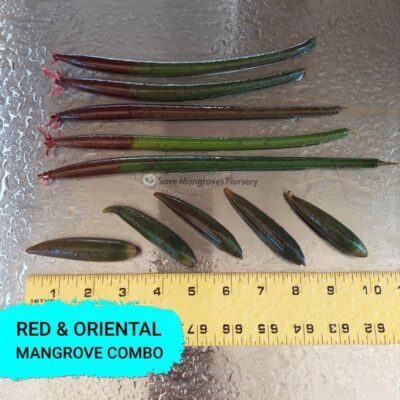Mangroves are a unique and fascinating plant species that have adapted to thrive in challenging environments like coastal shores, estuaries, and even aquariums. For aquarium enthusiasts and conservationists alike, understanding the growth process of mangroves, especially from propagules, is essential. A common question that arises is: how long does it take for mangrove propagules to sprout? The answer is influenced by various factors, including the environment, care, and species of mangrove.
In this article, we’ll explore the growth timeline of mangrove propagules, offer practical tips for speeding up the process, and provide insights based on personal experiences.
What Are Mangrove Propagules?
Understanding Propagules
Before diving into the sprouting timeline, it’s essential to understand what mangrove propagules are. Unlike typical seeds, mangrove propagules are essentially baby trees, fully formed and ready to grow as soon as they find suitable conditions. They are elongated, cigar-shaped, and can float in water for extended periods before rooting.
Good: ✅
- Propagules are pre-germinated, meaning they’re ready to grow once they find a stable environment.
- They are hardy and can withstand various environmental conditions, making them ideal for beginners.
Bad: ❌
- Propagules may take time to establish roots, especially in less-than-ideal conditions.
- Without proper care, they may not sprout or thrive as expected.
Mangrove Fact: 🌟
Mangrove propagules can float in saltwater for up to a year before finding a suitable place to root and grow, making them one of nature’s most resilient plant species.
The Sprouting Timeline of Mangrove Propagules
Initial Stages of Growth
Once a mangrove propagule is planted or finds its way to a suitable location, the sprouting process begins. In ideal conditions, you can expect the first signs of sprouting within 2 to 3 weeks. However, this timeline can vary based on factors like water salinity, temperature, and light availability.
In my experience, when I first added mangrove propagules to my aquarium, I noticed tiny roots starting to emerge around the two-week mark. It was exciting to see them begin to establish themselves, and I knew I was on the right track.
Factors Affecting Sprouting Time
- Water Quality: Mangroves prefer slightly brackish water but can adapt to freshwater or saltwater. The salinity level plays a crucial role in how quickly the propagules sprout. For example, in a saltwater tank, the sprouting process may be slower if the salinity is too high.
- Light Availability: Mangroves need plenty of light to grow. Full-spectrum LED lights that mimic natural sunlight are ideal. Insufficient light can delay sprouting or lead to weak growth.
- Temperature: Mangroves thrive in warm environments. The ideal water temperature for sprouting is between 70°F and 85°F. Cooler temperatures can slow down the process.
- Nutrient Availability: While mangroves can absorb nutrients from the water, providing a nutrient-rich substrate can help speed up the sprouting process.
Typical Sprouting Timeline
- Weeks 1-2: The propagule begins to adjust to its new environment. No visible signs of growth are apparent, but the root system starts developing internally.
- Weeks 3-4: Roots begin to emerge from the propagule, and if planted in the substrate, it starts anchoring itself.
- Weeks 5-6: The first leaves begin to sprout from the top of the propagule. At this stage, the mangrove is well on its way to becoming a fully established plant.
Mangrove Fact: 🌟
Mangroves are known for their slow growth, but their resilience and ability to thrive in harsh environments make them worth the wait.
How to Speed Up the Sprouting Process
Tips for Faster Growth
If you’re eager to see your mangrove propagules sprout, there are several things you can do to encourage faster growth:
- Optimize Light Exposure: Ensure your mangroves receive at least 10-12 hours of light per day. Using full-spectrum LED lights can mimic natural sunlight and promote faster growth.
- Maintain Proper Salinity: For Red Mangroves, a slightly brackish environment is ideal. If you’re growing them in freshwater, consider adding a small amount of marine salt to create a more suitable environment.
- Use a Nutrient-Rich Substrate: While mangroves can grow in various substrates, using a nutrient-rich one can give them a boost. Consider adding root tabs or liquid fertilizers to provide essential nutrients.
- Monitor Water Temperature: Keep the water temperature between 70°F and 85°F to ensure optimal growth. If necessary, use a heater to maintain a stable temperature.
Good: ✅
- Following these tips can help speed up the sprouting process and lead to healthier mangroves.
- A healthy environment encourages strong root and leaf development, resulting in a thriving plant.
Bad: ❌
- Skipping any of these steps can delay growth or lead to poor plant health.
- Over-fertilizing or providing too much light can also have adverse effects.
Personal Experience with Mangrove Propagules
A Journey of Patience and Reward
As a professional aquarium enthusiast, I’ve had the pleasure of growing several mangrove propagules in various setups. One thing I’ve learned is that patience is key. In one instance, I was a bit too eager and kept checking the propagules daily, expecting rapid growth. However, the process was slow, and I had to remind myself that mangroves are naturally slow growers.
When I finally saw the first leaves sprout after a few weeks, it was incredibly rewarding. The wait was worth it, and the mangroves became a beautiful and functional addition to my aquarium, helping to filter the water naturally.
Mangrove Fact: 🌟
Mangroves not only clean water but also provide habitat and shelter for various marine life, making them an essential part of any coastal ecosystem or aquarium.
Conclusion: Patience Pays Off
Mangrove propagules are remarkable plants with the potential to transform your aquarium into a thriving ecosystem. While they may take a few weeks to sprout, the wait is worth it. By providing the right conditions, you can encourage faster growth and enjoy the many benefits that mangroves bring to your tank.
At Save Mangroves Nursery, we sell healthy Live Red Mangrove Plants that are ready to add to and naturally filter your Saltwater, Freshwater, or Brackish Aquarium tanks. We ship out to all 50 states daily, so you can start your own mangrove-growing journey today. Whether you’re a seasoned aquarist or just starting, adding mangroves to your tank is a rewarding experience that brings both beauty and functionality to your aquatic environment.
Best seller products
-
18”-24” Red Mangroves With Roots & 2-4 Leaves
Price range: $34.99 through $87.99 -
10”-14” Red Mangroves With Roots & 2-4 Leaves
Price range: $19.99 through $47.99 -
28″ Red Mangrove Tree – Fully Mature Plant
Price range: $0.00 through $230.00 -
[RARE] Orange Oriental Mangroves Propagule Seeds
Price range: $19.99 through $79.99 -
30″ Red Mangrove Tree – Fully Mature Plant
Price range: $0.00 through $180.00 -
Red & Oriental Mangrove Combo Bundle
Price range: $29.99 through $44.99
 Cart is empty
Cart is empty 




![[RARE] Orange Oriental Mangroves Propagule Seeds](https://savemangroves.com/wp-content/uploads/2025/07/Oriental-Mangrove-Seeds-Save-Mangroves-Nursery-400x400.jpg)



Add a Comment
You must be logged in to post a comment